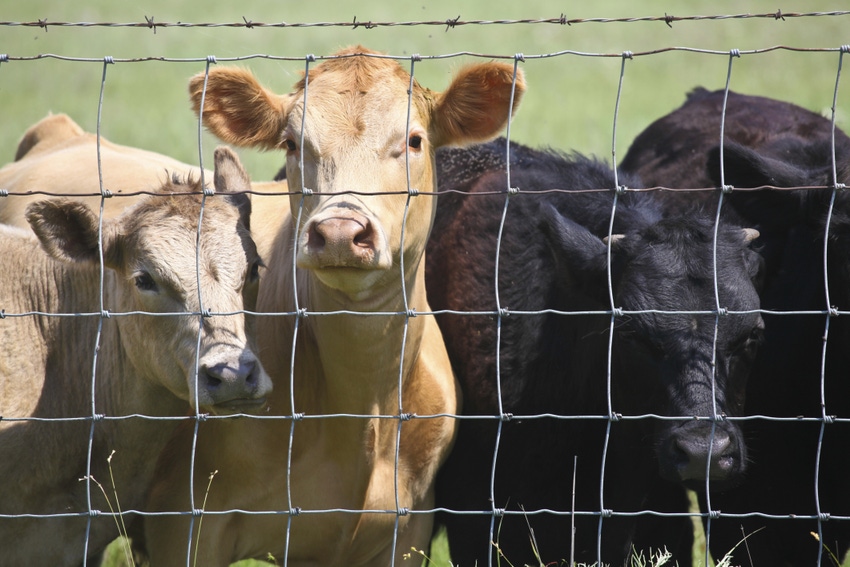Chair of national audit advisory board sees beef quality improvements and additional opportunities.
March 7, 2018

Following 25 years of measurement, management and continued improvement, the quality of beef is high, but there is still an opportunity to make it better, according to Pennsylvania State University Extension beef cattle specialist Dan Kniffen.
The most recently completed "National Beef Quality Audit" indicates that the industry doing a good job of implementing change to improve production shortfalls, said Kniffen, assistant animal science professor who recently served as chairman of the National Beef Quality Assurance advisory board. However, in a dynamic system such as beef production, there is always room to make it a little better, he added.
"The beef industry quality audit encompassed both fed cattle and market cows and bulls, and researchers from eight universities were involved in the project," Kniffen said. "Texas A&M, Colorado State and Oklahoma State universities took the lead in gathering data and interpreting the results for cattle producers."
Market breeding stock that includes dairy animals contributes a significant volume of beef for the world market, Kniffen noted. These market animals also can contribute up to 20% of revenue into the business and present virtually no additional expense.
The initial checkoff-funded beef quality audit was conducted in 1991 and focused on finished cattle. The beef quality effort evaluating market cows and bulls was first initiated in 1994. Since the first cow and bull audit, the industry has made significant strides in five major categories: herd management techniques, (1) animal welfare and handling, (2) hide damage, (3) injection-site damage, (4) injection-site location and (5) carcass bruising.
The initial directives to the industry helped producers focus on specific areas for improvement. Kniffen said those instructions stated that the industry could significantly enhance the value of market animals if it would work to make the following improvements: recognize and optimize the value of market cows and bulls on the farm or ranch; be proactive to ensure the safety and integrity of the beef product; closely monitor herd health issues and market cattle appropriately and in a timely fashion, and use appropriate management and handling techniques to significantly reduce or prevent carcass quality defects.
"The industry made progress. By the time of the second audit in 1999, the industry had made significant strides in reducing condemnations, the frequency of disabled cattle, bruising, damage caused by branding, injection-site lesions and improving the overall condition of cattle," Kniffen said.
"Reduced numbers of injection-site lesions through the years is one of the industry's true success stories. Additional research conducted in 2017 evaluated the presence of injection-site lesions in the round based on the same procedure used in previous injection-site audits. That research demonstrated a 20% reduction in lesions during the past 15 years in dairy-type carcasses," he added.
However, the industry was not finished, Kniffen noted. The most recent audit in 2016 identified good progress in managing these issues and suggested improvements for further increasing the value and marketability of cows and bulls. Over the life of the audit, food safety — as a quality attribute — has grown into one of the most important factors for those who purchase wholesale beef.
Cattle transportation and mobility for all cattle types were surprisingly good. Most cattle walked normally, with no apparent lameness. This compared favorably with results from previous cow and bull audits. Since 2007, there has been an impressive 24.6% increase in dairy cow mobility, indicating that the industry's dairy animals are walking better.
Producers must continue to embrace this positive finding, Kniffen said. "Timely marketing is the most important factor to sustain this positive trend. The industry must continue to take advantage of proactive marketing of cows before lameness is observed or becomes an issue," he explained.
A portion of the audit included live-animal evaluations. Since 2007, there has been a trend toward increased body condition scores in both beef and dairy cows. In 2016, there was a 36% increase in the number of animals with a body condition score of three or above (on a scale of one to five) to 45%.
One problem the audit pointed out was that more than half of cow carcasses examined were bruised, an increase compared to 2007. The majority of the bruises were of minimal severity, requiring less than 1 lb. of surface trim to remove the damage. Most of the bruises in cows were located in the round or sirloin.
"There is still plenty of opportunity to improve this handling defect. Reducing the prevalence of carcass bruising, particularly in dairy cows, needs to be a higher priority for both cattle handlers and transporters," Kniffen said. "This simple change will help to improve the carcass values of all market cattle."
The take-home message for both beef and for dairy producers is that the industry leaves dollars on the table when it comes to maximizing the carcass value for market animals, Kniffen suggested.
Progress can continue, he said, if the industry will focus on: food safety; appropriate management of market cows and bulls to increase muscling (weight) before harvest; timely marketing before physical defects become severe; gaining a better understanding of the causes to eliminate carcass bruising; reducing defects to allow the cow and bull industry to capture additional value, and the use of Beef Quality Assurance programs to propel the momentum of the cow and bull industry forward.
You May Also Like


.png?width=300&auto=webp&quality=80&disable=upscale)
